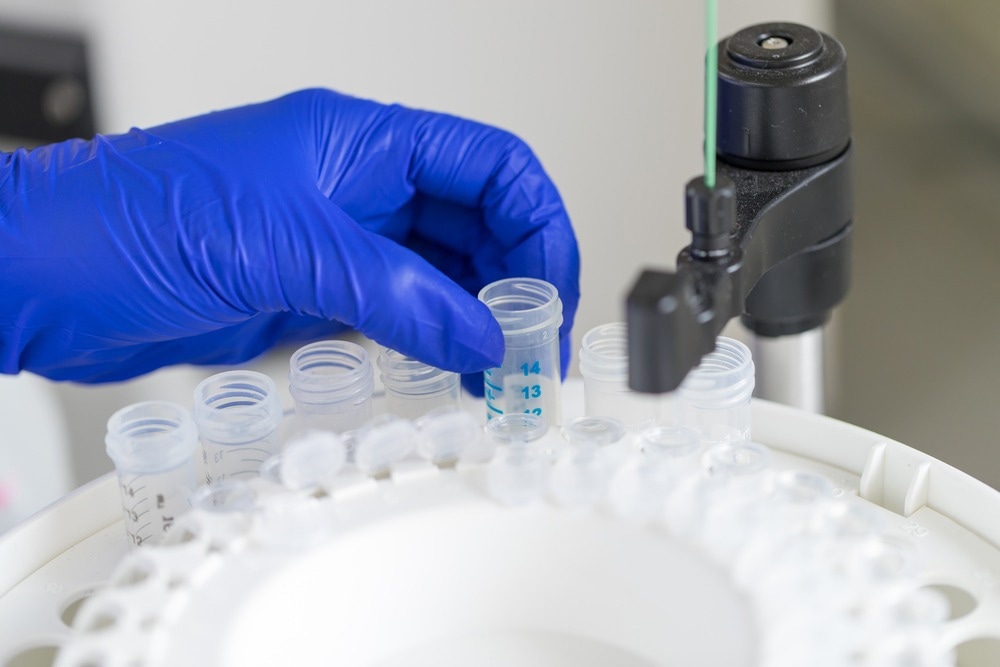The most expensive step in the manufacturing of protein-based drugs (e.g., insulin and antibodies) is the purification phase. This step involves isolating protein from the bioreactor used for its production, accounting for almost half of the total cost of protein-based drug development.

Image Credit: Lab Photo/Shutterstock.com
Recently, a team of MIT engineers devised an innovative method of purification that can significantly reduce the cost of the purification step. This study is available in ACS Applied Materials and Interfaces.
Conventional Protein Purification Methods
Conventionally, chromatography is used for protein purification, which is extremely expensive. Alternatively, the protein crystallization method could be used to determine protein structure, but this method has several limitations. For instance, the protein crystallization method is extremely slow, i.e., even in optimal settings, the development of protein crystals could take several days or even weeks, and requires a high concentration of protein for analysis. Despite these limitations, this method has been used for downstream protein manufacturing.
Other methods associated with protein purification are mixed-mode chromatography and cation exchange. In addition, microfluidic strategies, such as aqueous two-phase systems and liquid–liquid extraction processes, have been used for low-concentration separation. However, all these methods have some limitations that tend to increase the manufacturing cost of protein-based drugs.
A Novel Nano-based Method Designed for Protein Purification
MIT engineers sought to address these problems to reduce the production cost of the protein purification process. Professor Kripa Varanasi of MIT and the senior author of this study stated, “The goal is to reduce the cost so that this kind of drug manufacturing becomes affordable in the developing world."
Here, bioconjugate-functionalized nanoparticles were used to address the challenges associated with conventional manufacturing processes. This method offers nucleation of crystals at a lower protein concentration in less time.
Previously, nanoparticles used in protein crystallization were based on adsorption or electrostatic interactions. Earlier studies have also pointed out that proteins naturally self-assemble to form highly ordered structures, such as fibrils, crystals, or amorphous aggregates.
The current approach focussed on binding proteins to specific sites using a templated architecture. Varanasi explained, “This work uses bioconjugate-functionalized nanoparticles to act as templates for enhancing protein crystal formation at low concentrations,". Put simply: nanoparticles were functionalized such that they could selectively form covalent bonds to specific amino acids. As a result, an in situ protein layer was formed that functioned as a template for the subsequent protein layers. The template enabled rapid crystallization.
Two bioconjugates, namely, N-hydroxysuccinimide ester (NHS) and maleimide (MAL), were used to functionalize gold (Au) nanoparticles. MAL reacted with the thiol group of cysteine, while NHS interacted with the N-terminus of proteins or primary amine in lysine.
Although the crystallization approach was demonstrated using lysozyme and insulin model, this method could be applied to a wide range of other proteins, such as vaccines and antibody drugs. Varanasi stated, “This is a general approach that could be scaled to other systems as well. If you know the protein structure that you're trying to crystallize, you can then add the right bioconjugates that will force this process to happen”.
The newly developed strategy was characterized using three crystallization experiments: batch crystallization, vapor diffusion, and droplet crystallization. The size, quality, and quantity of protein crystals were assessed using the vapor diffusion method. Batch crystallization helped measure protein crystallization possibility across a wide range of salt and protein concentrations. The nucleation rate and crystallization induction times were evaluated via the droplet crystallization approach.
The bioconjugate-functionalized nanoparticles were found to lower induction times and improve nucleation rates for lysozyme and insulin. Both these conditions are essential to decrease the crystallization time associated with protein purification.
The nucleation rate and induction times of both bioconjugate-functionalized nanoparticles and bare gold nanoparticles were analyzed. The bare gold nanoparticles exhibited the slowest nucleation rate and shorter induction time for insulin but not for lysozyme. The induction time was found to be a stochastic process in the absence of a catalyzing factor.
Caroline McCue, an MIT graduate student and lead author of the study, stated, "Even at low protein concentrations, we see a lot more crystals forming with these bioconjugate-functionalized nanoparticles.”
The experimental results showed that the current approach could significantly bring down protein purification costs, which could be beneficial for protein-based drug manufacturing. In addition, a machine learning technique was also used to analyze the protein crystal formed, which further reduced analyzing time.
Scientists believe that if important protein-based drugs could be developed at a lower cost, these drugs could protect many more people across the globe against various diseases.
Reference
McCue, C. et al. (2023) Enhancing Protein Crystal Nucleation Using In Situ Templating on Bioconjugate-Functionalized Nanoparticles and Machine Learning. ACS Applied Materials and Interfaces. DOI: 10.1021/acsami.2c17208
Disclaimer: The views expressed here are those of the author expressed in their private capacity and do not necessarily represent the views of AZoM.com Limited T/A AZoNetwork the owner and operator of this website. This disclaimer forms part of the Terms and conditions of use of this website.